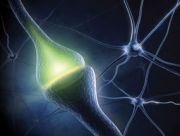Sativex Spray Effectively Reduces Spasticity in Patients with MS
Treatment with Sativex oromucosal spray produces significant reductions in spasticity in patients with multiple sclerosis (MS) compared with placebo, but researchers reported no significant difference between the two in neurophysiologic measures.

Spasticity for individuals with multiple sclerosis (MS) can be a difficult-to-treat, painful, and debilitating symptom that interferes significantly with mobility, sleep, and daily functioning. Sativex is a cannabinoid compound approved to treat moderate to severe spasticity for MS patients in the UK and several European countries.
New results of a small study show that add-on Sativex therapy can help significantly with spasticity symptom severity, according to Letizia Leocani, MD, of Milan’s San Raffaele Hospital (Milan, Italy). She presented the findings of a study of individuals with progressive MS and spasticity at a late breaking session on the last day of the 2014 Joint ACTRIMS-ECTRIMS Meeting, held in Boston, MA.
Sativex is delivered as an oromucosal spray; it is a balanced 1:1 combination of delta-9 tetrahydrocannabinol (THC) and cannabidiol (CBD), targeting the human cannabinoid (CB) receptors. According to Leocani, the CBD component of Sativex can help counteract some of THC’s psychoactive properties within the central nervous system’s CB1 receptors; CBD also has known analgesic and anti-inflammatory properties.
To examine effects of Sativex on spasticity symptoms, Leocani and colleagues enrolled 43 subjects (20 female) with progressive MS and clinically evident spasticity, and with an Expanded Disability Status Scale (EDSS) of 3.5-6. A double-blind crossover study design had subjects randomized to a treatment arm (Sativex dose to a patient-controlled maximum of 12 puffs per day) versus placebo spray, with same dosing instructions. After a two-week washout, patients were crossed over to the opposite study arm. Baseline testing as well as crossover and endpoint testing was performed for each arm, and patient-rated scales were collected throughout. Patients with positive urine THC were excluded at enrollment and at any point during the study if not on the treatment arm (four subjects were discontinued for positive urine THC after washout).
Discussing the pathophysiology of spasticity, Leocani noted that the stretch-reflex arc is implicated in MS spasticity, and that damage to the descending pathways can lead to disinhibition of the stretch-reflex arc. For the study, a variety of clinical and electrophysiologic tests were used to assess spasticity. Clinically, spasticity was evaluated by the modified Ashworth scale (MAS), with moderate to severe spasticity assessed as resistance to movement when the rater moves the limb through the full range of motion. Additionally, patient-scored numeric rating scales for pain and spasticity and a fatigue severity rating contributed to data collection. Other assessments used for this study included a 10-minute walk test and a motor evoked potential to assess corticospinal tracts, as well as the bilateral soleus H/M ratio, which measures a monosynaptic reflex response to electrical muscle stimulation.
Results showed that while subjects were in the active arm, they had a significant improvement in spasticity as measured by lower limb MAS, with significantly higher improvement versus placebo (MAS change -1.51 vs+0.16, p=0.009). Self-report of spasticity also improved while receiving the real treatment, and correlated with MAS. Patients in the treatment arm self-administered significantly fewer puffs of the medication than they did while in the placebo arm, and averaged just over half (6.97) of the maximum 12 puffs allowed per day. No significant difference between the two arms was seen in neurophysiologic measures, though there was a trend toward correlation between MAS and H/M ratio.
Side effects included some dizziness and subjective weakness, though differences between groups at either stage of the crossover study were not significant.
Leocani addressed the lack of effect of Sativex on neurophysiologic measures in the present study. The physiopathology of spasticity is complicated, she noted, and there are probably both spinal and supraspinal mechanisms involved in MS spasticity that are not captured in testing only corticospinal and monosynaptic pathways. After the presentation, a question arose whether the study could have been partially unblinded because of the potential psychoactive activity of Sativex. In response, Leocani pointed to the lack of significant difference in reported side effects of fatigue, somnolence, or somatic symptoms between the two arms, making it unlikely that subjects were aware of their treatment arm.